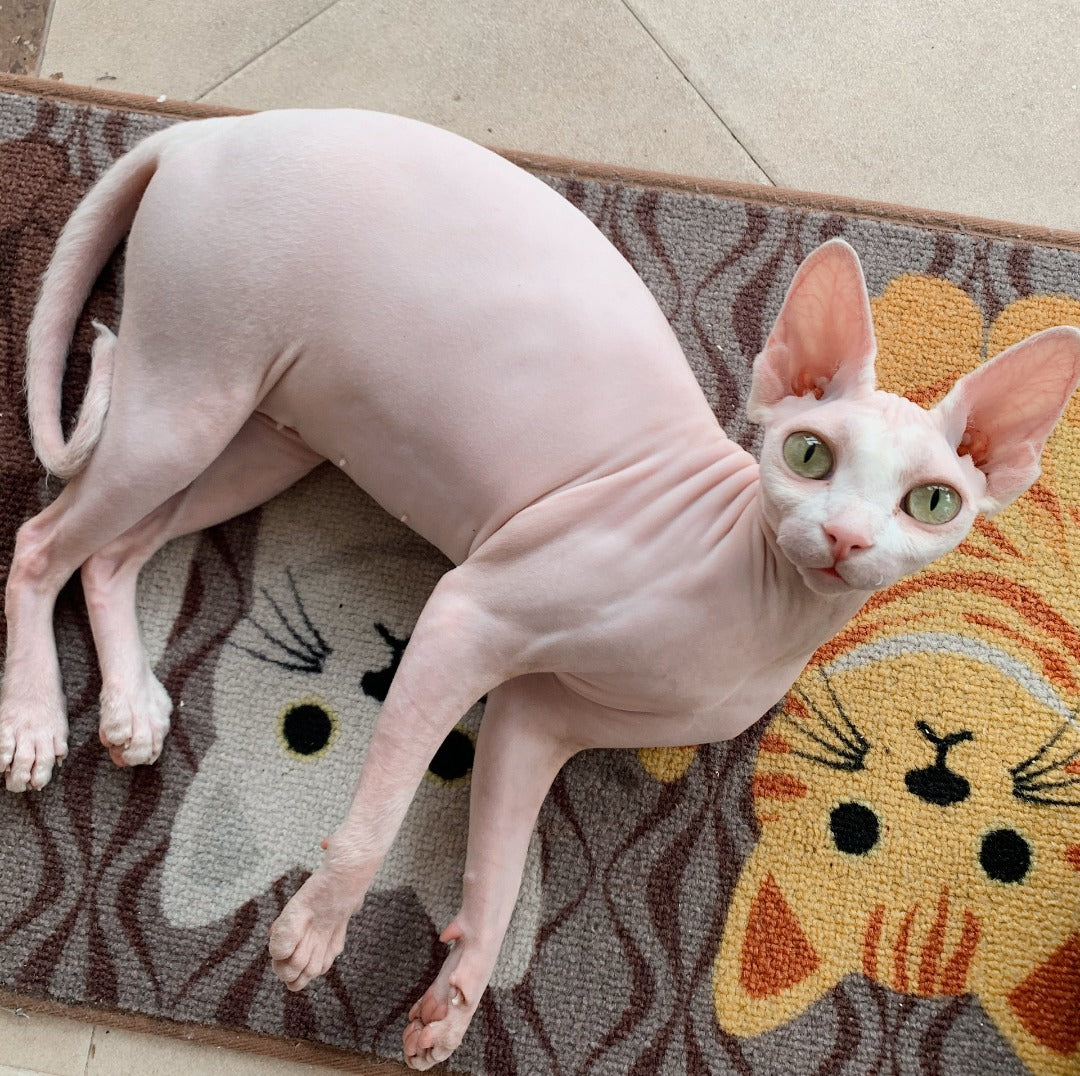
How to maintain the standard size of Sphynx hairless cat through diet and exercise?
Share
Diet management
*Choose the right cat food
High protein and low fat: Sphinx hairless cats need more energy to maintain body temperature due to lack of hair, so you should choose high-protein cat food, ensuring at least 30% - 40% protein content, animal protein is best, such as chicken, fish, beef, etc., to provide energy and maintain muscle. At the same time, the fat content is controlled at 15% - 20% to prevent obesity.
Balanced nutrition: Make sure the cat food contains essential fatty acids, vitamins (such as vitamin A, D, E) and minerals (such as calcium and phosphorus) to meet comprehensive nutritional needs. For example, Omega-3 and Omega-6 fatty acids are good for their skin health.
*Control the amount of feeding
Based on age and weight: Kittens grow fast and need to eat small amounts frequently. Feed 4 - 5 times a day for 2 - 4 months old; 3 - 4 times a day for 4 - 12 months old. 2 - 3 times a day after adulthood. According to the recommended feeding amount of cat food, adjust it according to the cat's weight. For example, for a 5 kg adult cat, feed about 100-120 grams of cat food per day.
Pay attention to physical condition: If the cat gains weight, reduce the amount of food appropriately; if the weight is reduced or the activity is high, increase it. Weigh the cat regularly, 1-2 times a month, and make fine adjustments based on the results.
*Pay attention to feeding snacks
Control the amount of snacks: Snacks can be used as rewards, but not excessively, accounting for no more than 10% of the diet. Choose low-calorie, nutritious snacks, such as canned cat food, boiled chicken breast, freeze-dried chicken nuggets, etc.
Choose healthy snacks: Avoid snacks with high salt, high sugar, high fat or many additives to prevent obesity, gastrointestinal problems or other health risks.
Exercise guidance
*Provide suitable toys
Interactive toys: Use cat teasers and laser pens to interact with Sphynx hairless cats for 15-20 minutes a day to stimulate their hunting nature, chase and jump, and consume calories. Cat teasers simulate the movements of prey to attract cats to pounce and scratch; laser pen spots move to make cats run and chase.
Self-service toys: Put out self-service toys such as balls and spring toys, so that cats can play alone at home. For example, small fur balls and plastic spring balls, cats will push, pounce and chase, increasing the amount of exercise.
*Create exercise space and facilities
Cat climbing frame: Place a cat climbing frame at home to let cats climb, jump, rest, exercise muscles and enhance coordination. The height of the cat climbing frame is 1.5-2 meters, with a multi-layer design, and is equipped with cat scratching boards and hammocks.
Cat tunnel: Place a cat tunnel, cats like to drill in and out, similar to hunting and exploration, to increase the amount of activity, the tunnel length is 1-1.5 meters, and the material is light and easy to clean.
*Regular exercise time
Develop a habit: Fixed exercise time, such as half an hour after dinner every night, interact and play with cats, form a regularity, let cats look forward to and adapt to the rhythm of exercise.
Step by step: The initial exercise time should not be too long and the intensity should not be too high, and the time and intensity should be gradually increased. After acclimation, perform interactive exercise for 20-30 minutes at a time, at least 5 times a week.
